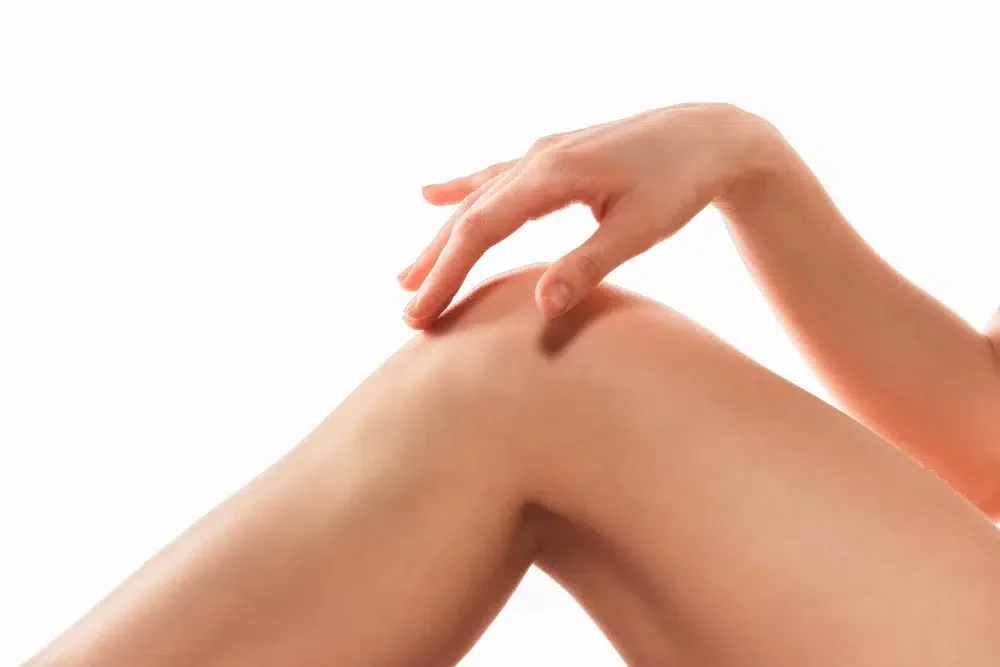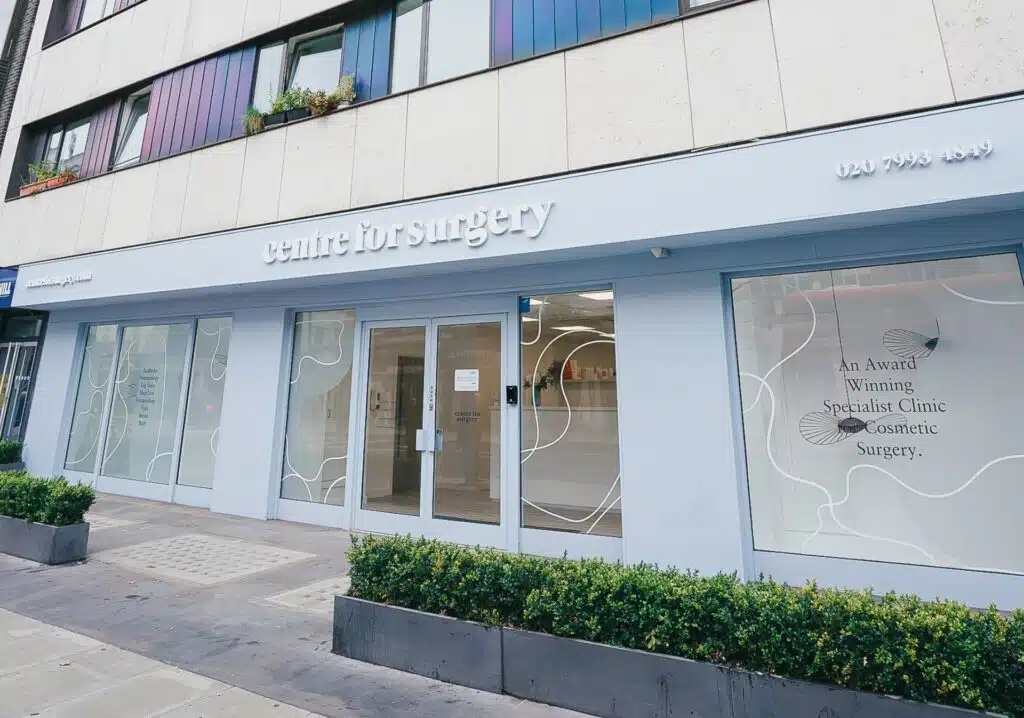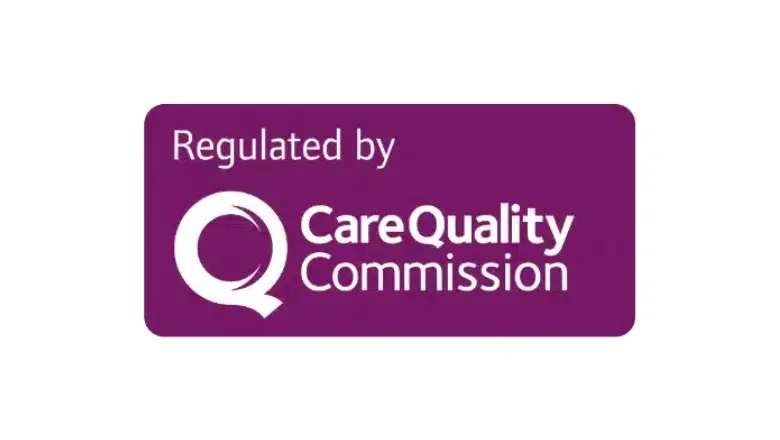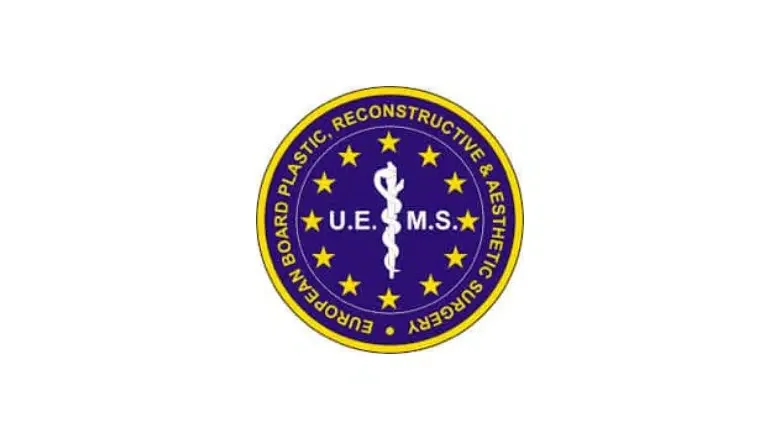Knee liposuction in London is one of the most effective fat removal procedures for permanently removing knee fat. Many people come to us having tried diet and exercise and still have resistant areas of fat usually found on the inner aspect of the knee. Fat may also accumulate at the front of the knee and is often difficult to shift with diet and exercise alone. Knee liposuction is most commonly carried out with a specialised vibrating cannula to effectively separate the fat from its surrounding attachments before being removed from the body with vacuum suction. Patients are often highly pleased with the outcome after knee liposuction. The procedure aims to produce slimmer and more contoured knees that appear proportionately to the rest of the legs. Knee liposuction is commonly combined with thigh liposuction to create a slimmer and sculpted leg.
What does knee liposuction involve?
We perform all knee liposuction procedures at our specialist Marylebone clinic in central London. When you arrive for your procedure, you will be admitted by one of our nursing staff before being assessed by your anaesthetist. Then, your surgeon will review you and perform preoperative markings around your knees. Once you are anaesthetised for the knee liposuction surgery, the surgeon will access the areas of excess fat around the knees by making 3 mm incisions to permit the insertion of the liposuction cannula. The liposuction cannula is designed to vibrate to effectively break up fat cells before they are removed using vacuum suction. Once the procedure is complete, the surgeon will express any residual anaesthetic fluid out of the small incisions, which will help improve liposuction recovery. Sterile dressings will be applied, and then you will be transferred to our designated recovery area, where you will be prepared for discharge a few hours later. All patients with a general anaesthetic must have a responsible adult escort to pick them up from the centre and look after them for the first 24 hours after their knee liposuction.
Fat that has been removed with knee liposuction does not grow back. The new shape of the knees will be maintained as long as you continue to eat a healthy diet and exercise regularly.
The inner part of the knee often accumulates fat in many genetically predisposed people, and knee liposuction can effectively remove these stubborn pockets of fat. The procedure can be performed independently under local anaesthetic when knee liposuction is carried out. If knee liposuction is combined with other lipo areas, such as thigh liposuction, we recommend a general anaesthetic for your comfort. Knee liposuction alone will create slimmer knees without the need to remove excess skin. The procedure can also address stubborn pockets of fat, which are situated at the front of the knee above the knee cap.
Not all types of knee fat are amenable to removal with liposuction, especially some kinds of fat located at the front of the knee. The most common cause of inaccessible fat areas for conventional liposuction is the deeper suprapatellar fat pad. In these cases, your surgeon may use microcannula tumescent liposuction to remove these difficult-to-access areas of knee fat effectively.
Getting the best results from knee liposuction depends on following your surgeon’s postoperative instructions in full. You should wear the specialised compression garment for a minimum of six weeks and avoid strenuous exercise for a minimum of four weeks. You will, therefore, be in the best position to get the best liposuction results once you have reached the six-week mark. Complete liposuction recovery can be expected within 6 to 8 weeks.
Why have the procedure?
Although knee liposuction is a straightforward procedure, many patients develop a significant increase in self-confidence from the procedure. This type of liposuction surgery is designed to produce slimmer knees. Thigh liposuction is commonly combined with liposuction of the knees to result in slimmer-looking legs that appear contoured. Knee liposuction results can be enhanced when combined with liposuction of the thighs. Knee liposuction can effectively remove localised pockets of fat in both the inner and upper aspects.
Many people may have knee asymmetry, which often appears more pronounced when viewed face-on. Knee liposuction is an excellent technique for correcting asymmetrical knees with a quick and straightforward procedure. Patient satisfaction rates after knee lipo are typically very high due to the significant improvement in emotional well-being many patients experience after the operation. Many patients who come to us complain about having fat knees and are often unable to wear specific clothing items such as swimwear, skirts or shorts. They are keen to explore the potential benefits of knee lipo to improve how they feel about themselves and regain their self-confidence.
Cellulite often affects the outer thighs and can sometimes extend to the knees. It is essential to remember that liposuction cannot get rid of cellulite and, in some cases, could make it worse. To effectively remove cellulite, we recommend treatment with CelluTite, a radiofrequency cellulite treatment. For older patients in their 50s and above, the ageing process often results in the development of loose skin. Any loose and wrinkly skin can be easily removed with surgical skin removal if required.
Who is an ideal candidate?
Knee liposuction is a quick and straightforward procedure to carry out. You will be assessed at your consultation to determine your suitability, and the following factors will be taken into account:
- You are in physically good health and have no chronic medical conditions
- You have a body mass index below 30
- You have tried diet and exercise, which have failed to improve the appearance of fat knees.
- You are aware of the risks and complications of the procedure and have realistic expectations of what knee liposuction can achieve
- You have developed a loss of confidence as a result of having knees
Can knee liposuction be combined with other treatments?
Our surgeons regularly combine knee liposuction with liposuction to other areas of the body, including the thighs, calves and ankles, abdomen, back, and chest. Most people develop excess knee fat in the knee’s inner part, which commonly coexists with inner thigh fat. Therefore, most patients will choose knee liposuction in combination with thigh liposuction.
Our surgeons use a gentle method of fat extraction as part of the liposuction procedure. This helps preserve the delicate structure of fat cells, which can then be used in a fat transfer procedure. Fat transfer involves the removal of fat from unwanted parts of the body followed by its injection into desired areas, which require volume augmentation. Fat transfer to the face commonly involves knee liposuction to extract fat cells before being injected into different parts of the face, such as the cheeks, temples or lips. Power-assisted liposuction is the best liposuction technique to produce optimally prepared fat for fat transfer.
Pregnancy is often when women gain weight, and excess weight may develop in particular body areas, including the knees. Excessively fat can result in the appearance of fat knees. Many women after childbirth will choose to have a mummy makeover procedure, which is a highly effective combination treatment encompassing breast surgery, liposuction and tummy tuck surgery, as well as liposuction to other areas such as the knees. Women can effectively restore their pre-pregnancy body shape with a significant increase in self-confidence.
Although liposuction cannot remove cellulite, it can be combined with CelluTite, a specialised radiofrequency treatment that permanently removes it. CelluTite only requires one treatment with minimally invasive techniques to achieve permanent cellulite reduction.
If you would like to learn about the different treatment options that can be combined with knee liposuction, contact us today, speak to one of our knowledgeable patient coordinators and book a face-to-face consultation with one of our expert surgeons.
Why choose Centre for Surgery?
- Our plastic surgeons at Centre for Surgery are renowned for their expertise in performing many cases of knee liposuction each year.
- Our surgeons are fully GMC registered and have completed many years of training in plastic surgery.
- We perform hundreds of liposuction procedures yearly, including revision liposuction for treatment elsewhere.
- Our preoperative and postoperative nursing team is dedicated to providing the highest standards of medical care both before and during your procedure.
- Our state-of-the-art cosmetic surgery clinic is located on Baker Street in Marylebone, London.
- We have expertise in fat transfer and skin excision surgery to ensure you have the full range of options available to get rid of fat knees.
How much does knee liposuction cost?
Knee liposuction starts from £3500 under a general anaesthetic. The procedure will cost less if you have any liposuction under local anaesthetic. Patients who want to combine knee liposuction with other body areas should factor in the increased cost when planning the procedure. 360 liposuction of the legs starts from £6000 and can produce slimmer and more toned legs, including knee liposuction as standard.
Knee liposuction costs include all preoperative and postoperative nursing care, facility fees, and anaesthetic fees. You will have your own patient coordinator as your dedicated point of contact throughout your patient journey with Centre for Surgery. If you have any questions or concerns, please feel free to reach out anytime. All guide prices given online should be viewed as a rough estimate, and you will receive an accurate quotation once you have had your face-to-face surgeon consultation. The NHS does not carry out procedures for improving cosmetic appearance; this treatment must be done in a private clinic.
What are the causes of fat knees?
One of the most common causes of fat knees is due to the development of excessive weight gain. People who gain weight often do so by eating an unhealthy diet and carrying out little or no exercise. Many women may also get fat knees during pregnancy when there is often an increase in oestrogen levels, and fat knees after pregnancy are a common problem we get asked about. Puberty results in a significant rise in oestrogen, and this can be a cause of fat knees. Women approaching menopause often notice a gradual increase in body fat, which may be more noticeable around the knees. Our metabolic rate naturally decreases as we age, increasing the propensity to gain excessive fat, particularly manifest in fat knees.
Fat knees rarely exist in isolation. Inner thigh fat often develops simultaneously and will usually need to be treated to achieve proportionate, slimmer and contoured legs. Genetics can also cause fat knees, which can be effectively treated with knee liposuction for people who are otherwise generally slim.
How can I get rid of fat knees without surgery?
People often wonder how to get rid of knee fat. One of the most effective ways to improve the appearance of fat knees is to adopt healthy lifestyle habits. Losing weight can be achieved by following a healthy diet and exercising regularly. The prevalence of obesity continues to increase and is most commonly due to the development of sedentary lifestyles with little or no exercise coupled with a highly calorific diet. A healthy diet should contain plenty of fresh vegetables and fruit. Eating whole-grain foods has been proven to reduce the risk of certain medical conditions, including heart disease and type 2 diabetes. Consuming more lean protein will help you feel fuller for longer, and this should help minimise consuming junk foods such as burgers or French fries. Reducing sugar intake will help you lose weight and eliminate fat knees. Many sweetened fizzy drinks contain large amounts of sugar and should be eliminated from the diet.
NHS guidelines recommend carrying out a minimum of 150 minutes of exercise each week. This can be easily broken down into five 30-minute moderate to high-intensity training sessions. Achieving consistency with exercise depends on incorporating achievable routines into your everyday schedule to ensure you can maintain workouts for the long term. Regular activities which we would recommend include running and cycling. These are both excellent ways to burn fat and tone the knees. Before any cardiovascular exercise, you should carry out warmup exercises to minimise the risk of injury. Some patients may have difficulty with high-impact workouts such as running, and cycling may be a better option to reduce knee strain.
Long walks can still benefit older people significantly. Walking each day for at least 30 minutes will help improve the appearance of the knees and strengthen the legs.
Skipping is also an excellent activity for reducing knee fat. You should follow the correct technique when skipping to avoid knee injury. Regular physical exercise Will help to strengthen the leg muscles and improve the appearance of the knees at the same time. Many weight loss supplements are available online, although many products have unproven claims of effectiveness and can be expensive. We would advise avoiding weight loss supplements as the only method of losing weight. We would also recommend having a medical assessment by your GP before considering weight loss supplements in conjunction with a healthy diet and exercise.
Despite following a sensible diet and exercising regularly, many patients are genetically predisposed to having knee fat, which will not improve with an improved lifestyle alone. The best way to get rid of stubborn fat deposits in the knee would be to have a knee liposuction procedure. This procedure can get rid of knee fat permanently. Our expert surgeons have years of experience in carrying out knee lipo and will be able to advise you on the best options for you.










